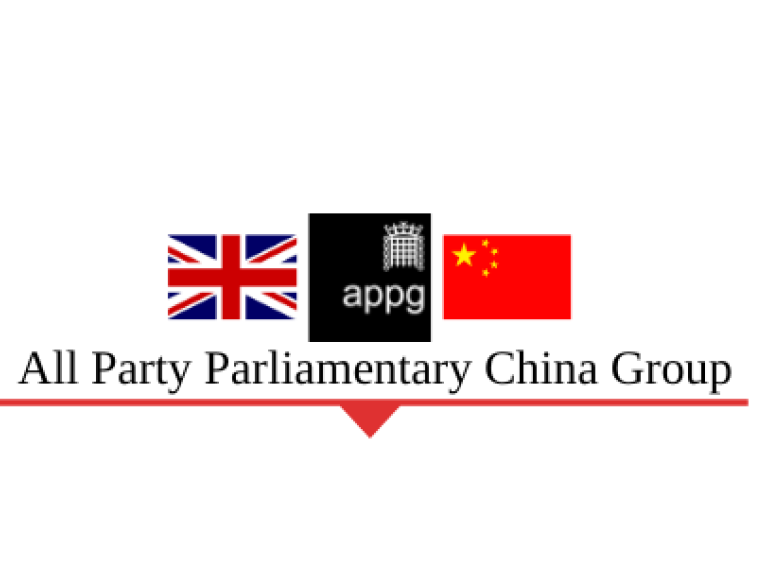Christian Gordon-Pullar-to whom huge thanks- and I put forward evidence recently to the IPO on what we thought the future of Design Rights should be. We said the following in our introduction.
-
Context:
The existing framework encompassing intellectual property laws that protect designs is overly complex. In the UK, depending on how one characterizes the context, four to six different types of overlapping design protection are available (see below). This creates barriers in effectively protecting creations for designers. Further, the overlapping elements of copyright and design protection in the UK are confusing to many designers and even to some legal practitioners. Designs have traditionally been protected by design law, copyright law, or both, depending of course on whether the respective requirements for protection are met.
For this introductory overview, in context, the Government’s Innovation strategy states that :
‘[D]esign is core to successful innovation’ and that ‘[G]reat design means putting the needs, wishes and behaviours of people at the heart of the innovation process, so that new ideas are truly desirable as well as being technically feasible and financially viable’.
If that is the case, then designers need to be afforded better tools, simpler processes and greater clarity in the law as it applies to designers and the protection of their creative rights. The IPO recognises that SMEs need the right support commercialising their IP and addressing these gaps and complexities in the laws impacting Designs is a key element for SMEs in the design industry.
In 2018, the Design Council reported that the design economy generated £85.2bn in gross value added (‘GVA’) to the UK in 2016, equivalent to 7% of total UK GVA. The Call for Views on Designs states that this ‘demonstrates the importance of designs to the United Kingdom both now and in the future’ Yet, the industry is struggling with the costs and complexities of UK laws on designs, especially post Brexit. Further, adoption of new technologies that might aid or simplify some of the cost and time challenges that the UK’s design industry faces with the current UK laws on designs, post Brexit, is not keeping pace.
Entrepreneurs and designers in SME businesses in the textile, industrial and non-industrial design sectors are perhaps some of the most seriously impacted by the cost of adoption and the additional cost of upskilling staff to address post-Brexit inconsistencies in the law(s) impacting designs and the costs of adoption of new technology, such as 3-D printing, 4-D designs or AI-generated designs.
Perhaps because of its complexity, design protection is often misunderstood by designers and so less used, compared other IP rights. In our conversations with industry groups, a consistent sentiment was expressed that designers are the ‘poor cousins’ of their counterparts in the music, fashion or software industries. Complexity is also, per ACID feedback, being used by some lawyers to exclude the small designer without the funds to instruct lawyers, often an unaffordable expense for SMEs.
This submission advocates the need for a substantial overhaul of the overlapping rights and a resetting of the law relating to design protection in the UK to assist designers in making the most of the UK Designs laws and related IPO processes. This includes maximising the benefits of the rights granted by the law on designs whilst promoting a more efficient, cheaper, simpler and more useable registration system, with the adoption of new AI and machine learning search tools that do not extend the existing lengthy registration process and avoid raising applicant costs any further.
-
Scope and Ambit
Any new regime also needs to recognise not only the overlapping challenges of the existing legislative framework but also the challenges of new technologies and their impact, including 3-D printing and 3-D/4-D designs and the future of the 4-D printing pioneers, technologies that are now increasingly available and prevalent in US, the EU and UK and to seek comparable benchmarks – in the US, EU and Asia – to ensure that the UK Designs laws remain competitive, encourage design registrations in the UK and offer clear, cost-effective solutions for the industry’s challenges. The breadth of the consultation suggests that the Government shows willingness and clear intent to assist business in creating a national designs regime that works better for designers. We would therefore encourage the IPO address these concerns with a significant overhaul of the system, helping businesses to leverage the strategic and commercial value of their designs.
-
Overview / Summary of Feedback
The headline points of note, in our view are as follows:
- Brexit-related consequences. EU IP post Brexit left the design industry with a problem of registering in EU and UK. Prior to Brexit, it was clearer/easier.
- Higher Legal costs. The industry has lost some confidence in IP attorneys and IP attorneys are not as familiar with registered designs and unregistered design practices or the finer points of application of copyright and design laws, especially post-Brexit;
- The sector has lost confidence in the design registration system, offering no real protection against larger companies who pay for legal advice and continue to infringe.
- Damages. If awarded these are low and do not compensate for costs; statutory guidance on damages or minimum damages provisions would help the industry.
- Novelty searches. Currently, the UK Patent Office does not search for conflicting designs when it receives an application. This area needs attention and redress. Whilst some expressed concerns about the cost of new searches, delays in application procedures and costs of training to use such new tools, there is a significant opportunity to use AI and machine learning in the Registered Design process and to simplify, making registered design searches easier and helping countless businesses through the current quagmire.
- Criminal sanctions. Further criminal sanctions / provisions should exist in UK law beyond those in the existing legislative framework, e.g. s.5 of the RDA. It is worth recalling that the majority of designers rely on unregistered design protection. Therefore, criminal sanctions should exist for unregistered design infringement. We would advocate for a change in the law, making it a criminal offence to infringe unregistered design rights. This reflects the contention that there are more attractive protections elsewhere[i];
- Harmonisation. Globally – there is a lack of registered design law uniformity. Dubai is an example of issues experienced by ACID. The UK should consider EU laws and laws in comparable jurisdictions and frame a harmonizing law for designs. One element to include would be that disclosure (required) should be anywhere, whether in the EU, the UK, or elsewhere. The place where the design is first disclosed has become critical in determining whether the design is protected as either a supplementary unregistered design in the UK or an unregistered community design in the EU.
- Term for Registered and Unregistered Designs: Extension. We would advocate for a change in the duration of the protection of unregistered design rights. 10 years (from disclosure) is too short and we would recommend to extend to 25 years (given the call for extension of IP protection for AI-generated IP might extend such protection to 25 years)
- Economic Impact. Key members of ACID (Anti-Copying in Design) have indicated[6] that their members and organisations have ‘scaled back on global exports post Brexit as a result of above’.
- Registered design for 3-D/4-D printing. This remains an open question. Whilst 3-D printing is now prevalent[7], 4-D printing is emerging as a new area of industrial and design application that will require new legislative consideration. 4-D printing may forever change the design landscape. 3-D printing or additive manufacturing has already allowed designers to create three-dimensional objects from two-dimensional digital files with obvious implications for counterfeiting, in industrial design sectors, particularly but also in the fashion industry.
In addition to the copyright protection afforded to works of artistic craftsmanship in designs, four specific ‘design rights’ available in the UK prior to 31 December 2020 (IP completion day) are set out below.
- Registered design rights:
- UK registered designs
- Registered Community Designs (RCDs) (in force across the entire EU)
- Unregistered design rights:
-
- UK unregistered design right(also known as ‘design right’)
- Unregistered Community Designs (UCDs) (in force across the entire EU)
-
Those four different types of overlapping design protection available today in the UK are:
- registered designs,
- supplementary unregistered design,
- continuing unregistered community design (if made public in UK or EU before 1 Jan 2021); and,
- UK unregistered design right (“design right”).
In addition, as mentioned, copyright will also subsist in works of artistic craftsmanship.
Further, there are also two further EU rights – a) Community Unregistered Design Right and b) Community Registered Design Right. Whilst they are not available in the UK, they are available to UK designers if they first publish their designs within the EU.
-
Recommendations: Framework and Harmonisation
We encourage the IPO and UK Government to take steps to restore designers’ confidence in the UK Design registration system by simplifying and clarifying the rights into 3 categories:
- Registered designs (including for 3-D and 4-D designs)
- Unregistered Designs.
- Harmonising all elements into a single simpler category of Unregistered designs (removing overlaps with copyright or clarifying that protection for such rights shall subsist in copyright)
- Currently shape and configuration (how the parts are arranged) of 3-dimensional objects is automatically protected in the UK for whichever ends first of:
- 10 years after it was first sold; or
- 15 years after it was created
- Copyright.
- Clarifying which elements applicable to designs can be protected by copyright, including consideration and treatment for 3-D and 4-D designs, adding clarity for applicants and users and removing the current confusion caused by overlapping elements.
- At the international level, Article 2(7) of the Berne Convention on the Protection of Literary and Artistic Works (hereinafter, “Berne Convention”) lets signatory countries decide the extent and mode of application of their copyright laws to works of applied art and industrial designs and models. In the EU, Article 17 of the Design Directive obliges Member States to consider designs protected by design rights also eligible for copyright protection, if such designs comply with the respective protection requirements. The key requirement for copyright protection in the EU is originality, defined as “the author’s own intellectual creation.”
- For this requirement to be fulfilled, the author must have been able to express her creativity in an original manner, Article 17 of the Design Directive also states that “[t]he extent to which, and the conditions under which, such a protection is conferred, including the level of originality required, shall be determined by each Member State.”
- The provision seemed thus to leave to Member States the decision of whether to apply the harmonised criterion of originality – “the author’s own intellectual creation” – to designs, or to instead adopt a different protection requirement for this specific type of work. Following this possibility, a few Member States such as Germany, Portugal and Spain required a higher threshold of originality or artistic merit of the work.
- The CJEU has however clarified that the harmonised criterion for copyright protection applies to designs as well. In other words, the only requirement that a design has to fulfil in order to be protected by copyright in the EU is that it is original in the sense that it is the author’s own intellectual creation.
- Clarifying which elements applicable to designs can be protected by copyright, including consideration and treatment for 3-D and 4-D designs, adding clarity for applicants and users and removing the current confusion caused by overlapping elements.
6th April 2021
Regulating the Internet
6th April 2021
What will the year of the Ox bring in UK China Relations
18th July 2015
Lord C-J debates the future of the BBC
8th December 2014
Danny Tells the Lib Dems’ Record on the Economy
1st December 2014






